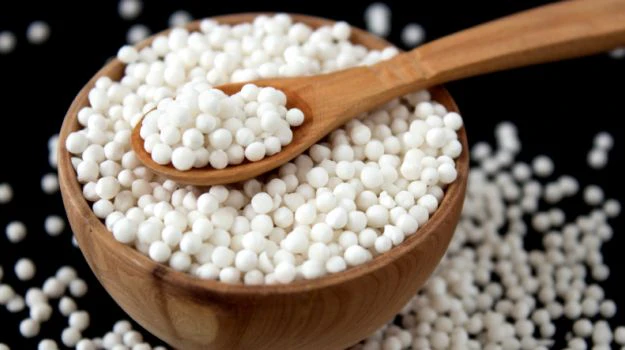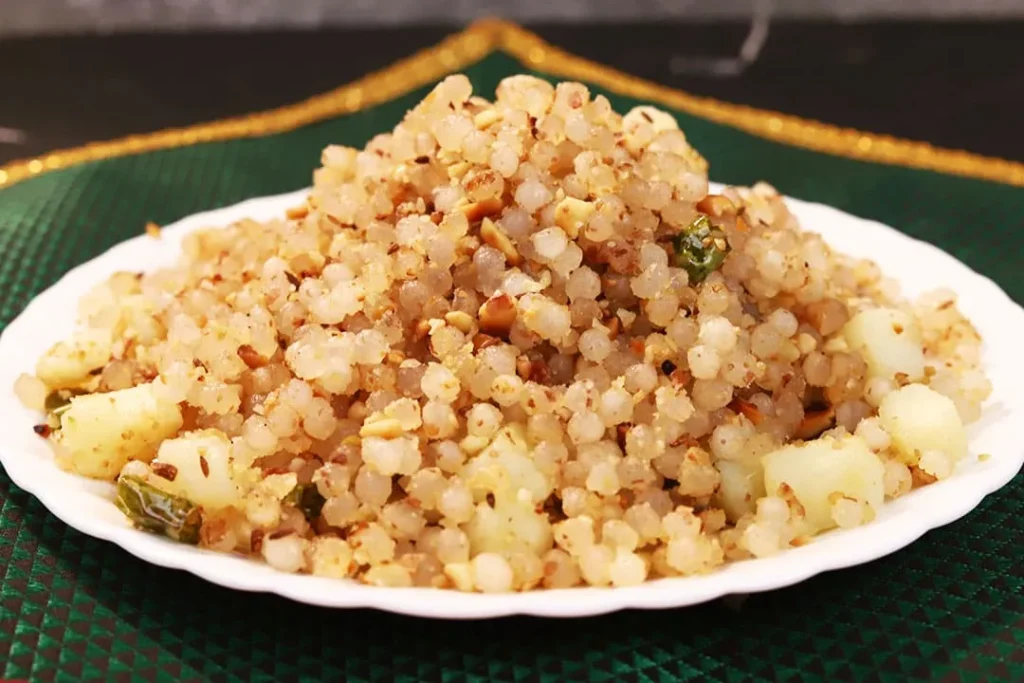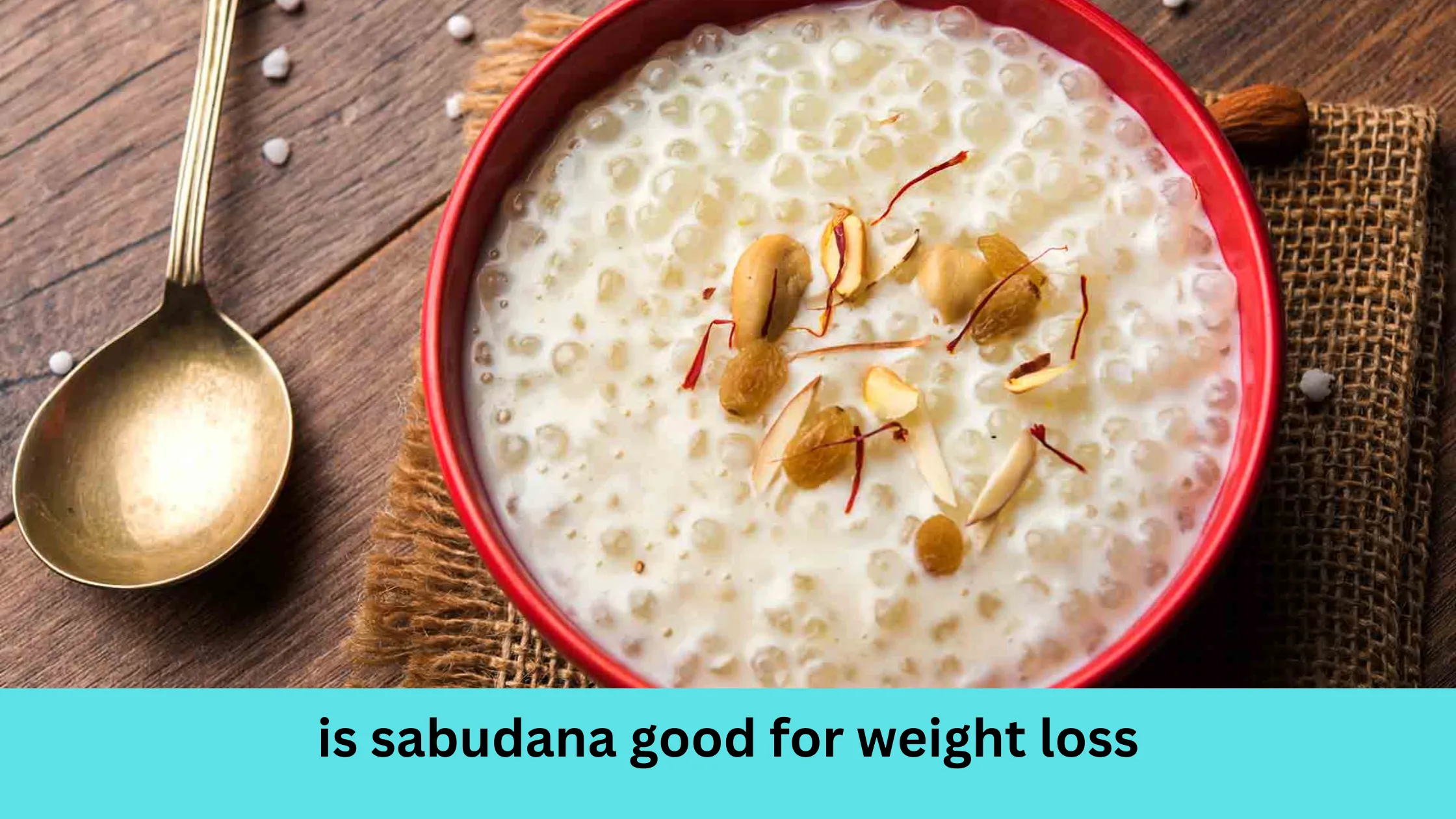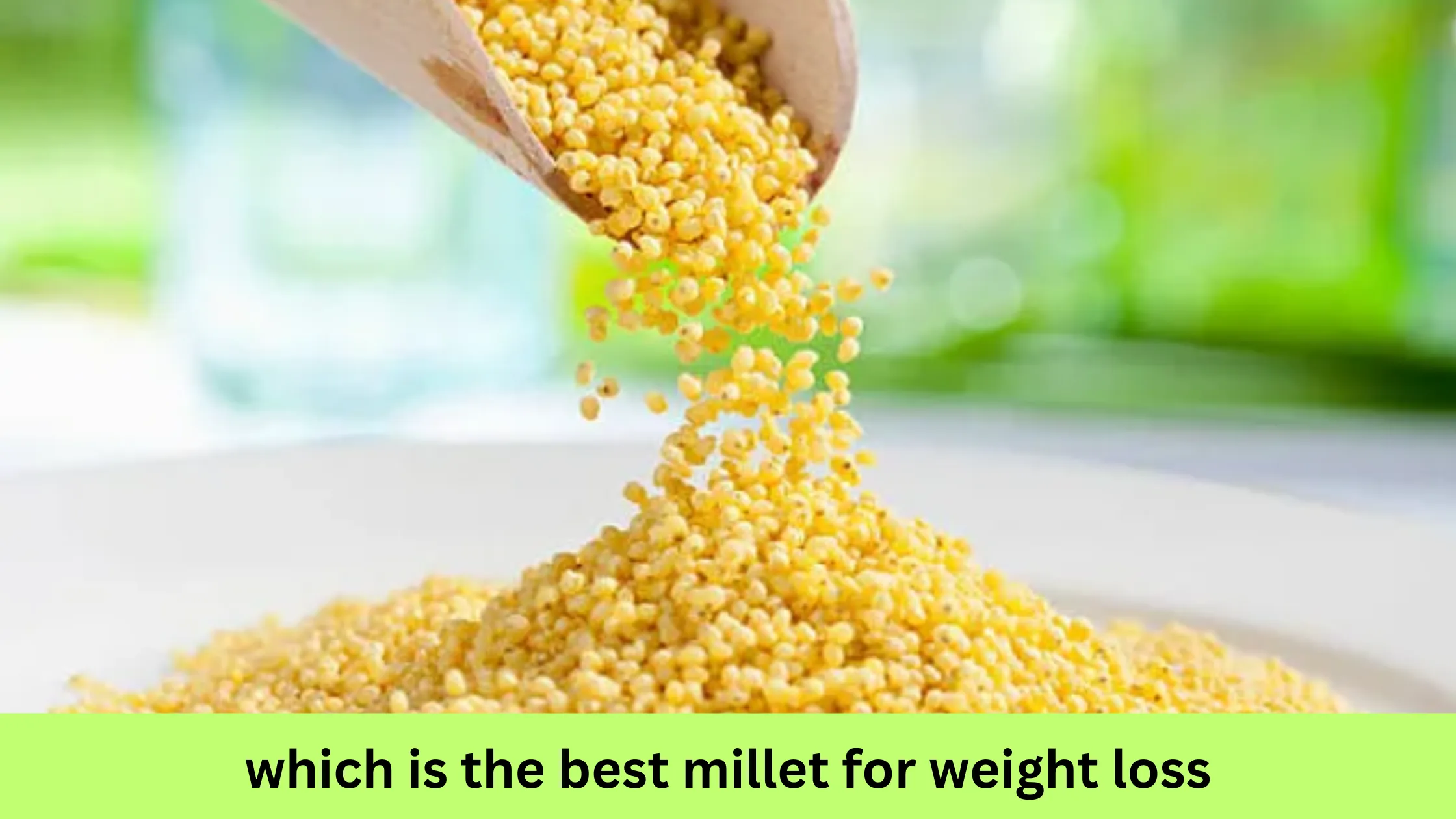Sabudana, also known as tapioca pearls, is a popular ingredient in Indian households. It’s commonly used in fasting recipes like sabudana khichdi and sabudana vada. But beyond its traditional uses, many people are curious if sabudana can actually help with weight loss.
When it comes to weight loss, choosing the right foods can make all the difference. Sabudana is light, filling, and provides quick energy. But there’s also a lot of confusion—since it’s mostly made of carbs, can it really fit into a weight loss diet?
This blog will break it all down for you. We’ll talk about sabudana’s benefits, how you can include it in your meals, and share some easy and tasty recipes that won’t sabotage your weight loss goals. By the end of this, you’ll know exactly how sabudana can work for you, or whether it’s something to enjoy only occasionally.
What is Sabudana?
Sabudana, also known as tapioca pearls, is a popular food ingredient in India. It’s made from the starch of the cassava root, which is processed into small, white, round pearls. These pearls become soft and chewy when soaked or cooked, making them a versatile ingredient for many dishes.
You’ll often see sabudana being used in recipes like khichdi, vada, and kheer, especially during fasting days in India. That’s because it’s considered a light and easily digestible food, making it a favorite during religious fasts.
When it comes to nutrition, sabudana is mostly made up of carbohydrates, which makes it an excellent source of quick energy. However, it has very little protein, fat, or fiber. Here’s a quick look at what sabudana provides in terms of nutrients (per 100 grams of raw sabudana):
- Calories: 350-360
- Carbohydrates: 85-90 grams
- Protein: 0.2-0.5 grams
- Fat: 0.2 grams
- Fiber: Very minimal
Because of its high carbohydrate content, sabudana is great for giving you an energy boost, but it’s not very nutrient-dense on its own. This is why pairing it with other healthy ingredients like vegetables, nuts, and yogurt is important if you want to make it part of a balanced meal.
Sabudana is naturally gluten-free, which makes it a good option for people who have gluten intolerance or celiac disease. It’s also easy to digest, which is why many people eat it when they’re feeling under the weather or need something light on the stomach.
In short, sabudana is a simple, versatile food that’s loved by many. It may not be packed with nutrients, but when used wisely, it can fit into a healthy diet—whether you’re fasting, working out, or just looking for a quick meal option.

Is Sabudana Good for Weight Loss?
Sabudana is a popular food that many people enjoy, especially during fasting or when they want a light meal. But when it comes to weight loss, there are some things you need to consider. Let’s break it down into the good and the not-so-good.
The Good Side of Sabudana for Weight Loss
- Boosts Energy Quickly
Sabudana is rich in carbohydrates, which are a quick source of energy. This makes it great if you need a pre-workout meal or something to keep you active during the day. Unlike heavy meals, sabudana gives energy without making you feel too full or sluggish. - Easy to Digest
If your stomach feels sensitive or you want something light, sabudana can be a good choice. It’s gentle on the digestive system, which helps avoid bloating or discomfort, a common problem with some other foods. - Can Be Combined with Healthy Ingredients
While sabudana on its own is mostly carbs, it works well when paired with other nutrient-rich foods. For example, adding peanuts, vegetables, or yogurt can turn it into a balanced meal with protein, fiber, and healthy fats.
The Not-So-Good Side
- High in Carbohydrates
Sabudana is mostly carbs, with very little protein or fiber. While carbs give energy, eating too many can lead to weight gain if you’re not burning that energy. For weight loss, you need to balance your carb intake with other nutrients. - Can Spike Blood Sugar Levels
Since it’s high in simple carbs, sabudana can cause a quick rise in blood sugar. This isn’t ideal if you have diabetes or if you’re trying to avoid sugar crashes. Eating sabudana with protein or fiber (like peanuts or vegetables) can help prevent this. - Not Very Filling on Its Own
Because it lacks fiber and protein, sabudana doesn’t keep you full for long. You might feel hungry again soon after eating it. To fix this, always combine it with ingredients that are more filling, like veggies or nuts.
The Bottom Line
Sabudana can be a part of your weight loss diet, but it’s all about how you prepare it and how much you eat. If you stick to small portions and mix it with healthier ingredients, sabudana can give you energy without adding too many calories. Just be mindful not to overdo it, as it’s easy to eat more than you need because of its light texture and taste.
So yes, sabudana can be good for weight loss—but only if you eat it the right way.
Read Also this: Diets, Workouts, and More: How Female Actresses Lose Weight Fast
Health Benefits of Sabudana
Sabudana, also known as tapioca pearls, is not just a common ingredient for fasting recipes. It comes with some health benefits that can be helpful, especially when included in a balanced diet. Let’s take a closer look at what makes sabudana good for your body:
1. Gives You Quick Energy
Sabudana is mostly made up of carbohydrates, which are your body’s main source of energy. When you eat sabudana, your body breaks down those carbs into glucose, giving you an instant energy boost. This is why it’s great for people who are fasting, recovering from an illness, or need fuel for a workout.
2. Easy to Digest
Sabudana is light on the stomach and easy to digest, making it a good choice if you have a sensitive stomach or are recovering from a health issue. It’s often recommended for people who need a simple, non-spicy meal that won’t cause digestive discomfort.
3. Gluten-Free Option
For those with gluten intolerance or celiac disease, sabudana is a safe choice because it’s naturally gluten-free. It can replace other grains in meals and still give you the energy and satisfaction you need.
4. Keeps Bones Strong
Sabudana contains a small amount of calcium, which is essential for maintaining strong bones and teeth. While it’s not the richest source of calcium, adding it to your diet along with other calcium-rich foods can support bone health.
5. Soothes the Stomach
If you have acidity, indigestion, or an upset stomach, sabudana can help. Its soft, bland texture makes it soothing for the digestive system. This is one reason why it’s often served as khichdi during illnesses.
6. A Great Fasting Food
Sabudana is a popular choice for fasting because it gives you sustained energy without being too heavy. It’s also filling, so it can keep you satisfied for longer, making it easier to stay active during a fast.
Final Note:
While sabudana has many benefits, it’s important to eat it in the right way. Pair it with healthy ingredients like vegetables, peanuts, or yogurt to make it a balanced meal. Eating sabudana in moderation can help you enjoy its benefits without consuming too many carbs.
Tips for Incorporating Sabudana into a Weight Loss Diet
If you want to include sabudana in your weight loss diet, here are some easy and practical tips to get the best results without adding unnecessary calories.
1. Practice Portion Control
Sabudana is rich in carbohydrates, which means it provides quick energy, but eating too much can lead to weight gain. Keep your portions small—about 1/2 to 1 cup of cooked sabudana is enough for one meal. This way, you can enjoy its benefits without overloading on calories.
2. Pair Sabudana with Protein and Fiber
Eating sabudana on its own won’t keep you full for long. To make it more satisfying and healthy, pair it with protein-rich foods like peanuts, yogurt, or paneer. Adding vegetables like carrots, peas, or spinach will also increase the fiber content, which helps in keeping you full for a longer time and prevents overeating.
3. Choose the Right Time to Eat Sabudana
Timing matters! Sabudana is great as a pre-workout meal because it gives you a quick energy boost. It’s also a good option for a light breakfast or an evening snack. Avoid eating it late at night, as your body may not burn off the extra carbs while you sleep.
4. Avoid Fried Sabudana Dishes
Deep-fried sabudana vadas or fritters might taste amazing, but they are loaded with extra calories and unhealthy fats. Instead, opt for healthier cooking methods like steaming, roasting, or stir-frying with minimal oil. This way, you get the flavor without the guilt.
5. Watch What You Add to Sabudana
Be mindful of the ingredients you use when cooking sabudana. Avoid adding too much sugar or ghee, as they can increase the calorie count significantly. Use spices, lemon juice, and fresh herbs to enhance the flavor without adding extra calories.
6. Don’t Rely on Sabudana Alone
While sabudana can be part of your weight loss diet, it shouldn’t be your only food choice. Balance it with other healthy options like whole grains, vegetables, fruits, and lean proteins to make sure your diet is varied and nutritious.
By following these tips, you can enjoy sabudana while staying on track with your weight loss goals. It’s all about balance and making smart choices in the kitchen!

Weight Loss-Friendly Sabudana Recipes
If you want to lose weight and still enjoy sabudana, the trick is to prepare it in a healthy way. Here are four simple and tasty recipes that are perfect for weight watchers:
a. Sabudana Khichdi
This is one of the most popular sabudana dishes and can be made lighter for a weight-loss diet.
Ingredients:
- 1 cup soaked sabudana
- 1 tablespoon peanuts (roasted and crushed)
- 1 tablespoon ghee or olive oil
- 1 medium-sized boiled potato (optional)
- A handful of chopped vegetables (carrots, beans, or bell peppers)
- 1 green chili (chopped)
- 1 teaspoon cumin seeds
- Salt to taste
- Lemon juice and coriander leaves for garnish
Steps to Prepare:
- Heat ghee or oil in a pan and add cumin seeds.
- Add the chopped chili and vegetables, sauté for 2-3 minutes.
- Mix in the soaked sabudana and peanuts. Stir gently to avoid sticking.
- Cook for 5-7 minutes on medium flame until the sabudana turns translucent.
- Garnish with fresh coriander leaves and a squeeze of lemon juice.
Weight Loss Tip: Skip or reduce the potatoes to lower the calorie count and load up on vegetables instead.
b. Sabudana Upma
This is a healthy twist on sabudana, packed with fiber-rich veggies.
Ingredients:
- 1 cup soaked sabudana
- 1 cup mixed vegetables (carrots, peas, and beans)
- 1 tablespoon olive oil
- 1 teaspoon mustard seeds
- A few curry leaves
- 1 green chili (chopped)
- Salt and lemon juice to taste
Steps to Prepare:
- Heat oil in a pan and add mustard seeds and curry leaves.
- Add the green chili and mixed vegetables, and cook until they soften.
- Toss in the soaked sabudana and mix gently. Cook for 5-6 minutes.
- Add salt and squeeze some lemon juice before serving.
Weight Loss Tip: Use minimal oil and add more veggies for extra fiber and fewer calories.
c. Sabudana Pancakes
These are quick, filling, and a perfect breakfast option for weight loss.
Ingredients:
- 1 cup soaked sabudana
- 2 tablespoons rice flour (optional, for binding)
- 1 grated carrot or zucchini
- 1 tablespoon chopped coriander leaves
- Salt and spices (like black pepper or chili flakes) to taste
- A few drops of oil for cooking
Steps to Prepare:
- Mix all the ingredients in a bowl to form a thick batter.
- Heat a non-stick pan and lightly grease it with oil.
- Pour a ladle of the batter and spread it like a pancake.
- Cook on both sides until golden brown. Serve hot with yogurt or mint chutney.
Weight Loss Tip: Stick to non-stick pans to use as little oil as possible.
d. Sabudana Smoothie
This is an unusual yet refreshing way to enjoy sabudana.
Ingredients:
- 1/2 cup soaked and cooked sabudana
- 1 cup low-fat yogurt or almond milk
- 1/2 banana or a handful of berries
- A pinch of cinnamon or cardamom for flavor
Steps to Prepare:
- Blend the cooked sabudana, yogurt (or milk), and fruits until smooth.
- Add cinnamon or cardamom for flavor and mix well.
- Pour into a glass and enjoy it as a filling snack or a light meal.
Weight Loss Tip: Use low-fat or plant-based milk and avoid adding sugar. Sweetness from fruits is enough.
Final Thoughts on Sabudana Recipes
These weight-loss-friendly recipes are easy to make, delicious, and won’t leave you feeling guilty. By adding more vegetables, using minimal oil, and controlling portion sizes, you can enjoy sabudana without derailing your fitness goals.
Read Also: Lemon Water Recipe for Belly Fat Loss: Simple Steps at Home
Precautions While Using Sabudana for Weight Loss
Sabudana can be a part of your weight loss journey, but you need to be mindful of how you eat it. Here are some important things to keep in mind to make sure sabudana helps you stay on track:
1. Watch Your Portion Sizes
Sabudana is high in carbohydrates, which means it gives you energy but can also lead to weight gain if you eat too much. Eating a big bowl of sabudana can quickly add a lot of calories to your diet. Instead, keep your portion small—around 1 cup of cooked sabudana is a good amount for a meal.
2. Combine It with Healthy Ingredients
By itself, sabudana doesn’t have a lot of protein or fiber, which are important for weight loss because they keep you full for longer. To make it healthier, pair sabudana with ingredients like peanuts (for protein), vegetables (for fiber), and spices (for flavor). This will not only make your meal balanced but also keep you satisfied for longer.
3. Avoid Fried Sabudana Dishes
While dishes like sabudana vada are delicious, they are usually deep-fried and high in oil, which adds a lot of extra calories. If you’re trying to lose weight, it’s better to stick to steamed, boiled, or lightly sautéed sabudana recipes. For example, sabudana khichdi or pancakes made with minimal oil are great options.
4. Be Careful If You Have Diabetes
Sabudana is made up of simple carbohydrates, which can quickly raise your blood sugar levels. If you have diabetes or are watching your sugar levels, you need to be extra careful. It’s best to eat sabudana in small amounts and combine it with foods that help slow down sugar absorption, like yogurt or vegetables.
5. Don’t Eat It Every Day
Sabudana is a great occasional meal, but eating it every day might not be ideal for weight loss. It’s better to mix things up with other healthier, low-calorie options like oats, quinoa, or brown rice. This will give your body a variety of nutrients and help you avoid overloading on carbs.
6. Prepare It the Right Way
How you cook sabudana makes a big difference. Avoid using too much oil, sugar, or ghee while preparing it. Instead, opt for healthier cooking methods like steaming or stir-frying with just a little oil. A squeeze of lemon and a handful of fresh herbs can add flavor without adding calories.
By keeping these precautions in mind, you can enjoy sabudana as part of your diet without worrying about it affecting your weight loss goals. Remember, moderation is the key.
Frequently Asked Questions
1. Can I eat sabudana every day for weight loss?
Yes, you can eat sabudana every day, but only in moderation. Since sabudana is high in carbohydrates, eating too much of it might make it hard for you to lose weight. If you want to include sabudana in your daily meals, make sure you balance it with other foods that are rich in protein and fiber, like vegetables, nuts, or yogurt. Eating small portions and avoiding fried sabudana dishes like vadas can help you stay on track with your weight loss goals.
2. Is sabudana suitable for people with diabetes?
Sabudana is not the best choice for people with diabetes, especially in large quantities. It has a high glycemic index, which means it can quickly raise your blood sugar levels. If you’re diabetic and still want to enjoy sabudana, eat it in very small portions and pair it with foods that help balance blood sugar levels, like peanuts, vegetables, or protein-rich ingredients. Always check with your doctor or dietitian before making sabudana a regular part of your diet.
3. What are some low-calorie alternatives to sabudana?
If you’re looking for healthier or lower-calorie options, here are some alternatives:
- Quinoa: A high-protein grain that keeps you full for longer.
- Cauliflower rice: A low-carb substitute that’s light and healthy.
- Oats: A great option for energy and fiber.
- Brown rice: A healthier choice with more fiber compared to white rice or sabudana.
- Millets (like ragi or bajra): Nutritious and perfect for weight loss.
Conclusion
Sabudana, when used in the right way, can be a helpful part of your weight loss journey. It’s important to remember that it’s a starchy food, so it should be eaten in moderation. While it’s a great source of quick energy, especially for those who need a boost before workouts or during fasting, it shouldn’t be the main food in your diet if you’re aiming for weight loss.
The key is balance. Combining sabudana with other foods that are high in fiber and protein, like vegetables, peanuts, or yogurt, can make it more nutritious and satisfying. This helps prevent spikes in your blood sugar levels and keeps you feeling full for longer.
Including sabudana as part of a healthy, balanced diet can be enjoyable, especially when you try out the different recipes we shared, like sabudana khichdi, upma, or smoothies. These meals are easy to prepare, delicious, and can keep you on track with your weight loss goals.
However, always be cautious about how much sabudana you eat. If you’re trying to lose weight, overloading your plate with sabudana can make it harder to achieve your goals. Stick to proper portion sizes and focus on a variety of nutrient-dense foods.
At the end of the day, losing weight isn’t about eating just one specific food. It’s about making healthy, mindful choices every day. Sabudana can be a good addition to your diet, as long as you don’t rely on it too heavily. Focus on a balanced diet, regular exercise, and most importantly, enjoy your food!
So, give sabudana a try in your meals, experiment with the recipes, and see how it fits into your weight loss plan. With a bit of care and creativity, sabudana can become a tasty and healthy part of your diet.

My name is Seema. I am 25 years old. I have been blogging for 2 years. I love to talk about weight loss or I am also interested in this topic. I am a professional content writer. I want to share information about weight loss through my blog. Thank you.




